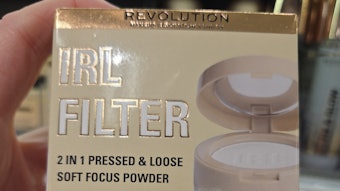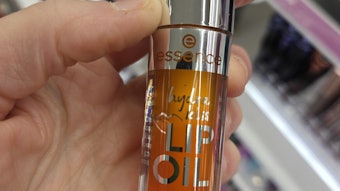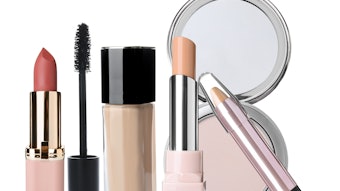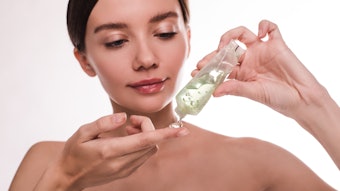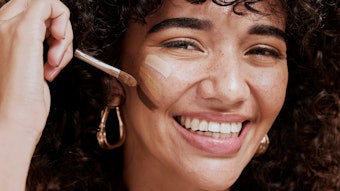
Read the full article in the July/August 2021 digital edition. . .
*Editor’s note: This paper is excerpted from a thesis presented in 2020 by Francesca Schumann for her master’s degree in cosmetic science at the University of Pavia, Italy.
Dissatisfaction with the color of one’s hair, since the earliest of times, has led men and women to seek solutions to change it. The first records of hair coloring date back to Ancient Egypt and to traditions of the contemporary period in China and the Indian subcontinent. Ancient civilizations derived coloring substances from what nature had to offer: berries, fruits, leaves, flowers, roots and barks—as well as various minerals and biological sources.1
Today, women and an ever-increasing number of men are hair color-obsessed for several reasons, including fighting the signs of aging/gray coverage, the desire for change or to fully express their personality. Approximately 80% of women color their hair beginning in their thirties;2 men do typically from their fifties, although not to the same extent.3
The dominant technology to manufacture today’s hair colors was developed at the end of the 19th century4 and is based on precursors and couplers that undergo oxidation—i.e., oxygen is supplied by developers containing diluted hydrogen peroxide; and colorants that impart the desired shade to hair in 30-40 min. This process has remained largely unchanged today.
Dyes of natural origin also exist and contain botanicals with coloring properties; henna is perhaps the most well-known. These align with today’s consumer values for natural and sustainable products. Notably, some traditional oxidation dyes are marketed for botanical, natural or herbal additives but this can be misleading, as it conveys the idea that the product contains only botanicals. In fact, many times these components are added at percentages irrelevant to a product’s color effects.
In response, the present article describes the development of a 100% vegetable-derived hair colorant for use in dyes without: synthetic colorants; alkalizers such as ammonia or other amines; and peroxide or other oxidizers. Further requirements included mildness to hair and the absence of adverse effects, e.g., allergic reactions in consumers or professional hairdressers.
The approach taken was based on the Siddha tradition of natural medicine and well-being; a holistic system indigenous to the Tamil Nadu people in southern India and elsewhere.5, 6 This system can be traced back to at least 4,000 B.C. through textual and archaeological evidence, but also in the culture of ancient civilizations that existed in the same area, pre-dating much of recorded history. To Siddhars, all therapies were derived from vegetable or mineral sources. They also were among the first peoples to adapt their diets to achieve a balance between physical and psychic well-being.7
For the present work, as noted, semi-permanent dye formulas containing wholly natural colorants were created. These were tested for physicochemical properties, stability, carrier performance, color performance and other effects on hair, as described here.
Materials and Methods
Botanicals tested: A range of botanicals was chosen from vast geographical areas including: Tibet-South, Sikkim, The Republic of India, Myanmar, Sri Lanka, Bangladesh, Maldives, Mauritius, Madagascar, Vietnam, Laos, Cambodia, Indonesia, Malaysia, Philippines and other ASEAN countries. The specific extracts tested for tinctorial properties included: Aloe barbadensis, Coccinia indica (ivy gourd), Curcuma longa (turmeric), Eclipta prostrata (false daisy), Corallina officinalis (coral weed), Melia azadirachta (neem), Moringa oleifera (horse radish), Ocimum basilicum (basil) and Solanum melongena (eggplant).
These extracts are provided in commercially available powder (oil or water soluble) or solution (in hydrophilic media and in oils) a form. The tests described hereafter refer to only the Eclipta prostrata extractb, as it was the best option for the current work, which focused on obtaining natural tones such as light brown, dark blonde, golden blonde, etc. Other shades were under development when this study ended; these formulations are not included.
Colorants manufacturing process: The coloring extracts used for this study were obtained through a manufacturing process with minimal modifications to the original method (specific details undisclosed). Traditionally, the natural high molecular weight waxes from Siddha botanical sources are incorporated with a variety of substrates, e.g., minerals or freshwater-sourced pearls. The materials are buried together in earthenware containers underground and heated by the sun, geothermically or by fire using a critical (high) temperature (the Puddam or Surya Patham process). The result is a calx of mineral (or oxide), pearl or marine shell finely coated with the colorant waxes.
Test Formulations
As noted, several hair color formulas were developed based on different emulsifiers, from anionic to cationic and nonionic, to ascertain the stability and color delivery performance of each formula. Emulsions were prepared by separately heating the oil and water phases, adding the oil to the water phase and homogenizing. The extract (colorant) was dispersed in a part of the water (5%) and added at the end of the process.
Different carrier ingredients also were tested to determine those most suited to improve color solubility and to obtain a perfect color release. Furthermore, this work sought to obtain data on the most suitable pH and to determine the interval of values where the extracts maintained their dyeing properties. All formulas were developed at pH levels of 4.0, 5.0, 7.0 and 9.0; those ranging between 4.0-5.0 showed the best coloring effects, as will be shown. For the sake of brevity, only the best-performing formulas, which were based on powdered water-soluble (PWS) colorants, are discussed here.
Anionic surfactant system: Formula A was based on a blend of glyceryl stearate, cetearyl alcohol, stearic acid and sodium lauroyl glutamatec. This formula showed good performance for color delivery but it proved unstable during stability testing. For this reason, it is not reported here; further improvements were made after the conclusion of the thesis work.
. . .Read more in the July/August 2021 digital edition. . .
References
- Wall, F.E. (1957). Bleaches, hair colorings and dye removers. In Sagarin, E., (ed.), Cosmetics, Science and Technology p 479. Interscience Publishers.
- Narayana, S., Krishnaswamy B. and Patel, D. (2013). Trends in use of hair dye: A cross-sectional study. Intl J Trichology 5(3) 140-143.
- TruthAboutHairColor (Accessed 2021, Jun 3). Color by numbers. Available at: https://www.truthabouthaircolor.com/it/hair-dye-health/colour-by-numbers-hair-dye-statistics
- Erdmann and Monnet (1883). French Patent 158,588.
- Patkar Kunda, B. (2008). Herbal cosmetics in ancient India. Indian J Plast Surg 41 (suppl) 134–137.
- Saroja, P.R. and Veluchamy, G. (1983). Simple medicine in Siddha system. Available at: https://www.academia.edu/5781754/Paper_20_Simple_Medicine_in_Siddha_System?auto=download
- Karunamoorthi, K., et al. (2012). Tamil traditional medicinal system—Siddha: An indigenous health practice in the international perspectives. Available at: http://koreascience.or.kr/article/JAKO201217136624975.page

